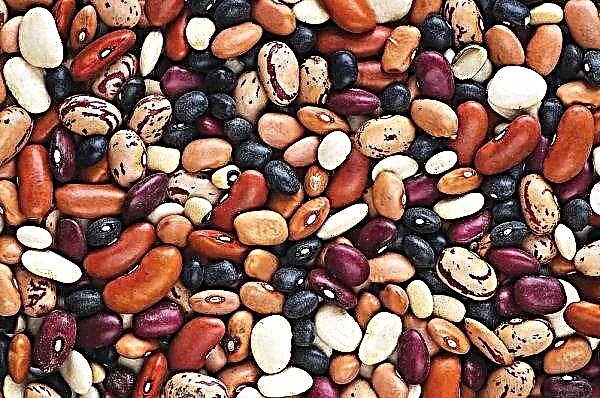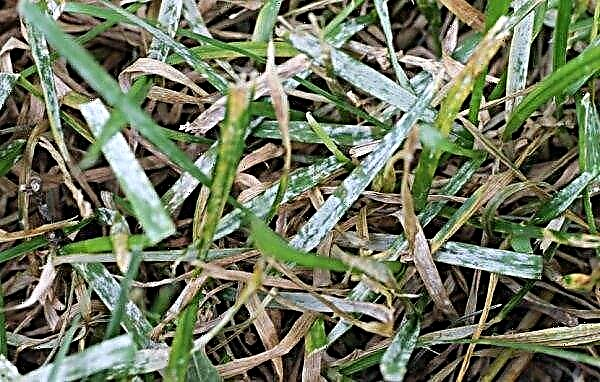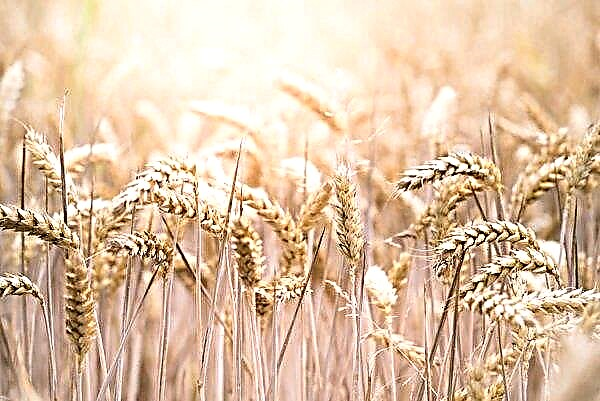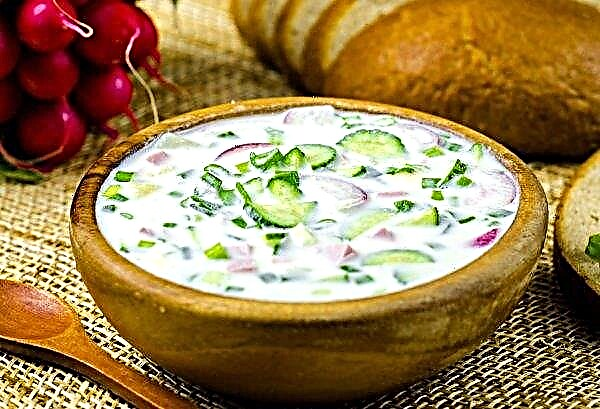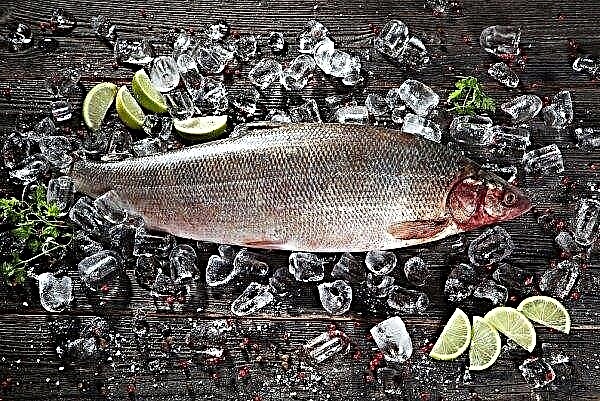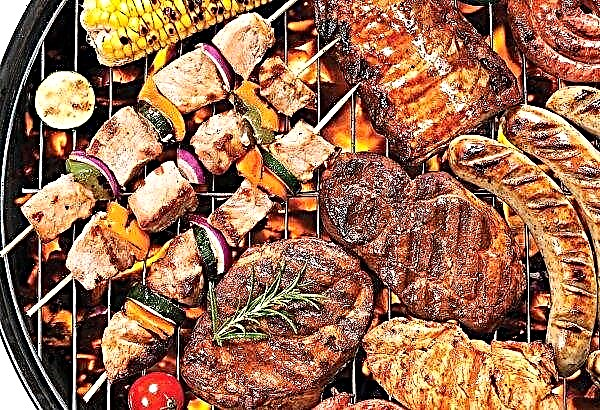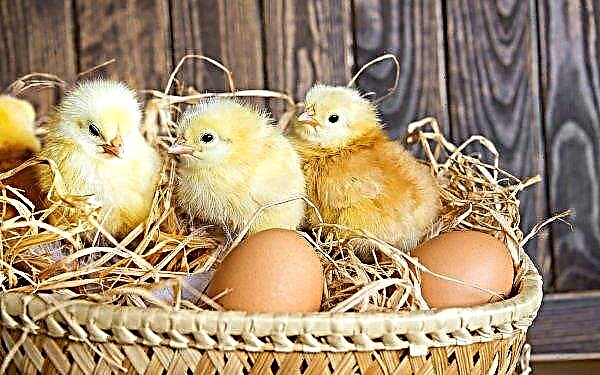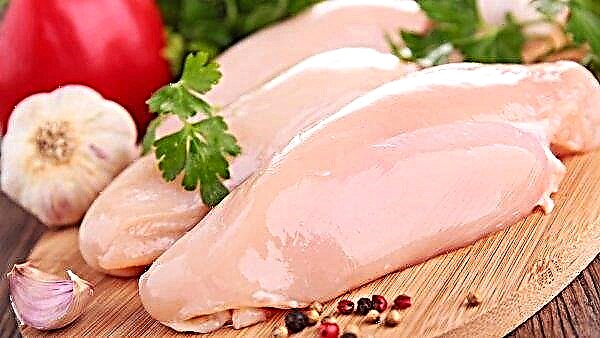Modern incubators completely replace mother hens, and the hatchability of chicks with their help is much higher. However, to achieve the most positive results is possible only if the poultry breeder can properly configure the machine and will constantly monitor the performance inside it. Far from the last place in the incubation of chicken, goose or duck eggs is air humidity, so we suggest that you familiarize yourself with the basic methods for determining and adjusting this parameter.
What should be the humidity standards in the egg incubator
The optimal values of air humidity depend not only on the type of eggs placed in the incubator, but also on the stage of their development, therefore, before setting the regulator to a specific value, make sure that it corresponds to the stage of nestling formation.
At the beginning of incubation
The first incubation week is the most important when breeding young birds, since it depends on it whether the embryo will develop further or the egg can be considered a “talker”. The optimal humidity indicator at this stage is considered to be a range of 50–70% (depending on the type of eggs laid), at a temperature not lower than + 37.8 ° C. Air exchange at this stage is not so important, so ventilation in the first 6-7 days is not necessary.
Air exchange at this stage is not so important, so ventilation in the first 6-7 days is not necessary.
Did you know? Some people experience a panicky fear of eggs, which is most likely due to their oval shape. In psychiatry, this phenomenon is called ovophobia, and, according to rough estimates, 1 out of 1000 adults suffer from such fears.
Mid incubation
Starting from the second week of incubation, the humidity inside the device should be reduced to 45–50% (for chicken eggs) or to 60% in the case of breeding ducks or geese. With high humidity at this stage, many embryos will die, and it does not matter which eggs are in question.
In this case, the air temperature remains at the same level or decreases by 1-2 degrees, and the optimal air exchange is achieved by briefly airing the incubator 1-2 times a day (starting from the 14th day).
When hatching chicks
The third conditional stage (the stage of the appearance of young animals) begins from the 17–18th day for chicken eggs and the 26–30th day for duck or goose and is characterized by a gradual hatching of the shell. Humidity these days again rises (up to 65–90%), and the temperature, on the contrary, decreases, and the average values are relevant for any type of bird and amount to + 37.5 ° C. Ventilation of the incubator at this time is not performed, and the hatched chicks move into the brooder only after complete drying. In the case of incubation of chicken eggs, 43–48% and 77–82% humidity are considered critical boundary values.
Ventilation of the incubator at this time is not performed, and the hatched chicks move into the brooder only after complete drying. In the case of incubation of chicken eggs, 43–48% and 77–82% humidity are considered critical boundary values.
How and how to measure humidity
All modern incubators have built-in hygrometers, which are responsible for measuring moisture, so no additional tools are usually required.
These devices are capable of detecting fluctuations within 20–98%, and the error in the measurements is usually not more than 5%, which is quite enough for a normal incubation process.
The average hygrometer includes a remote digital display with sensors attached to it (they are fixed in the inside of the camera), which transmit indicators to it after 5-7 minutes of being in the incubator chamber.
There is nothing difficult to use such a device, especially when you consider that, in addition to the above details, it contains only a toggle switch on and off. The batteries are used as moisture meters, and all the components are enclosed in a sturdy plastic case. If you have an outdated incubator model or for some reason the built-in moisture meter has started to malfunction, then it's time to learn how to measure humidity without it.
If you have an outdated incubator model or for some reason the built-in moisture meter has started to malfunction, then it's time to learn how to measure humidity without it.
The most popular way to obtain the required data is the following:
- Take two thermometers and wrap the end of one of them first with cotton, and then with several layers of cotton cloth, soaked in water and wrung out well.
- Turn off the power of the incubator, and then lay the prepared thermometers on the bottom of the working chamber in close proximity to each other.
- Close the lid and turn on the machine again, leaving the thermometers inside for 12-17 minutes.
- After the specified time, you can evaluate the performance of a dry and wet measuring device and compare them with the following table (temperature according to the "dry" thermometer + 37 ° C):
| Wet Thermometer | Air humidity |
| + 25 ° C | 35% |
| + 27 ° C | 44% |
| + 29 ° C | 54% |
| + 31 ° C | 63% |
| +33°C | 74% |
| + 34 ° C | 83% |
Important! Before each subsequent measurement, you will have to use a new piece of tissue moistened with room temperature water.
How to regulate humidity in an incubator
Based on the data received from the hygrometer, the poultry breeder makes the final decision - to continue monitoring these indicators or to begin to take specific actions to achieve the required norm values.
How to do this and what is needed for this depends on increasing or decreasing the available numbers, so we suggest considering the following options.
How to increase
You can increase the humidity inside the incubator chamber using improvised means in two ways: using a bath and heating element or by injection. In the first case, it is necessary to mount a ten (200 watts) in a metal vessel and, pouring the container with water, place it in the incubator, under the egg tray. Evaporating, the water will increase humidity, and as soon as the liquid is over, it is added.
Evaporating, the water will increase humidity, and as soon as the liquid is over, it is added.
Improving performance with a pump provides for water to enter the interior of the incubator from above, and all that is required to make such a device is a spray nozzle from household cleaners and a pump with a bath.
From the tank, water will be pumped into the sprayer, and that, in turn, will spread small drops throughout the incubator.
Important! You can install such a sprayer no closer than 20 cm from the surface of the egg tray, which will ensure uniform distribution of liquid on its surface.
Sometimes poultry farmers use purchased equipment to increase humidity, the most popular of which is an ultrasonic humidifier, for example, the AC100 at 240V and the Fogger Maker 16 mm Fogger.
How to lower
To lower the humidity level in the incubator, you need to perform almost all of the same actions as in the previous case, only exactly the opposite. Since most models of such machines have a bath with water in the lower compartment, to lower the values you only need to lower the water level in such a tank, after disconnecting the incubator from the power supply.
If the humidity indicator during incubation of chicken eggs reaches 80% and does not decrease in any way with the help of a regulator, then you have to act radically, temporarily removing the tray with water from the device. If, due to the design features of the incubator, this cannot be done, then water will have to be pumped out.
In extreme cases, moisture-absorbing materials are placed inside the machine in the form of a washcloth or fabric, which will help get rid of excess moisture. The time spent in the incubator is 30–40 minutes.
Of the finished devices for lowering these values, poultry farmers recommend the regulators VRD-1 and RV-16 / P, which also need to be placed inside the device.
Signs of increased or decreased humidity
Extreme humidity values inside the incubator can be noticeable even without the use of special measuring instruments. For example, the characteristic symptoms of increased values will be:
For example, the characteristic symptoms of increased values will be:
- clearly noticeable incline, without further withdrawal of young animals;
- the presence in the shell of a large amount of sticky amniotic fluid, which, thickening, significantly complicates the chicken’s exit, and he dies (you can verify this by breaking a frozen egg or shining it with an ovoscope: at high humidity, the chicken’s motor activity under the shell will be limited, and the squeak is barely audible )
In the case of a lowered level of humidity inside the incubator, the characteristic signs of this are:
- hulling of shells earlier than expected and the appearance of weak chickens (the process of “birth” itself takes longer than usual);
- all the chicks that are born seem very small and are characterized by limited mobility.
Did you know? Cooking one chicken egg takes no more than 10 minutes, but to cook the ostrich in the same way, you have to spend 2 hours. This is not surprising, given that from one piece you get as many scrambled eggs as you would from 25 chicken eggs.
What humidity should be for different types of eggs
Knowing how to measure the level of humidity and how to find out about the available values using improvised means, you will probably be able to take all the necessary measures to keep the eggs safe, but for this you need to additionally take into account the type of hatched chicks and the concept of the norm for them. For chickens, geese and ducks, the following values will be optimal conditions at different stages of development:
For chickens, geese and ducks, the following values will be optimal conditions at different stages of development:
| Egg incubation modes | |||
| View | The timing | Humidity (%) | Temperature (℃) |
| Chicken | 1-7 days | 50–55 | 37,8 |
| 8-14 days | 45 | 37,8 | |
| 15-18 days | 50 | 37,8 | |
| 19-21 days | 65 | 37,5 | |
| Duck | 1-7 days | 70 | 38,0–38,2 |
| 8-14 days | 60 | 37,8 | |
| 15-25 days | 60 | 37,8 | |
| 26–28 days | 85–90 | 37,5 | |
| Goose | 1-7 days | 70 | 37,8 |
| 8-14 days | 60 | 37,8 | |
| 15–27 days | 60 | 37,8 | |
| 28-30 days | 85–90 | 37,5 | |
The normal humidity level in an incubator with turkey or guinea fowl eggs will correspond to 56–70% (depending on the stage of development and congestion of trays), and during incubation of quail products, values should be maintained from 58% immediately after laying to 80% before the appearance of young animals by 18 –19th day. Knowing what humidity should be for the incubation of different types of eggs, controlling the incubator seems much easier, even if you have to make home-made devices to lower or increase the available values.
Knowing what humidity should be for the incubation of different types of eggs, controlling the incubator seems much easier, even if you have to make home-made devices to lower or increase the available values.
In general, the control of air humidity is carried out according to the same principles as the control of temperature values or optimal air exchange.



